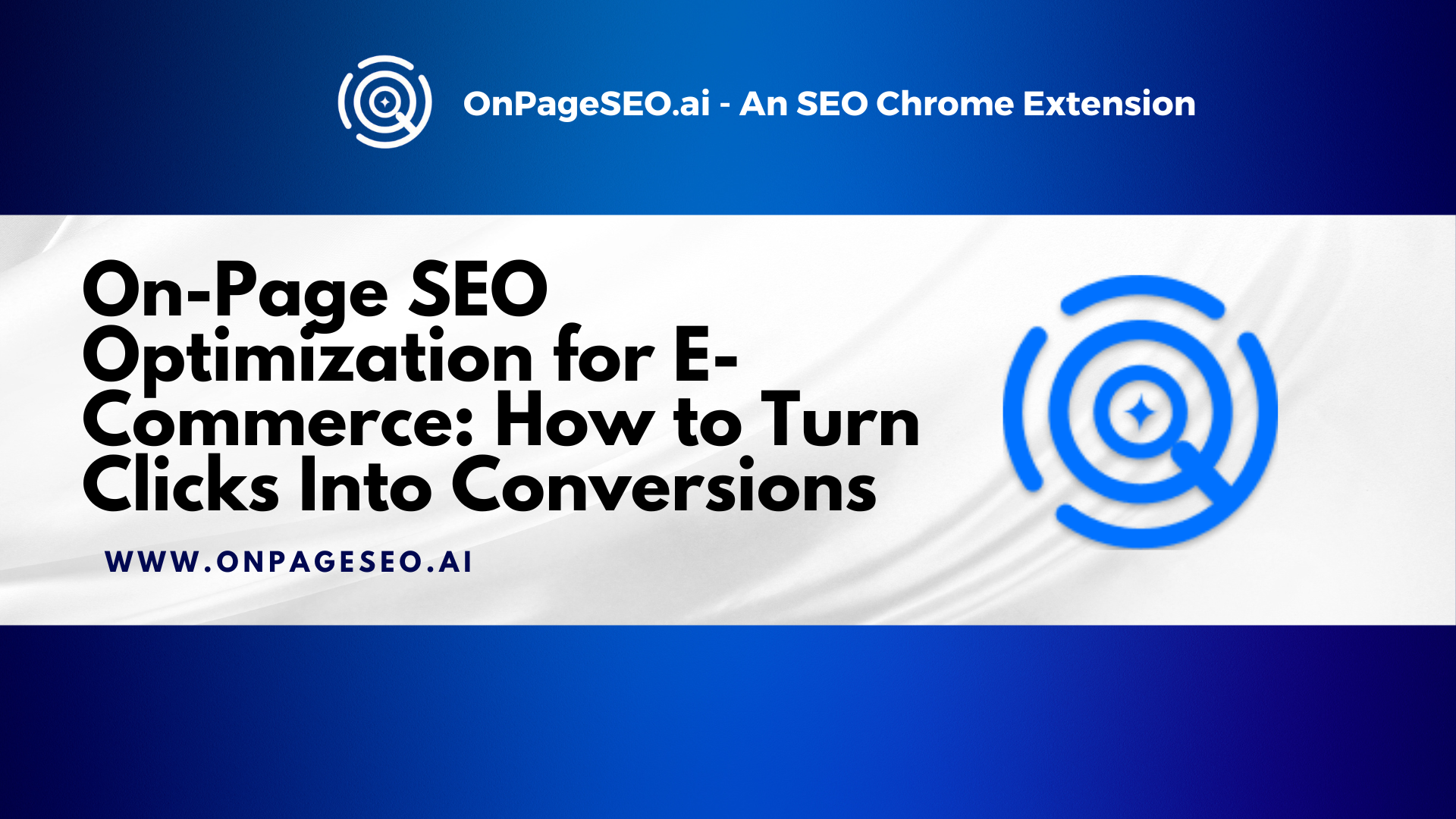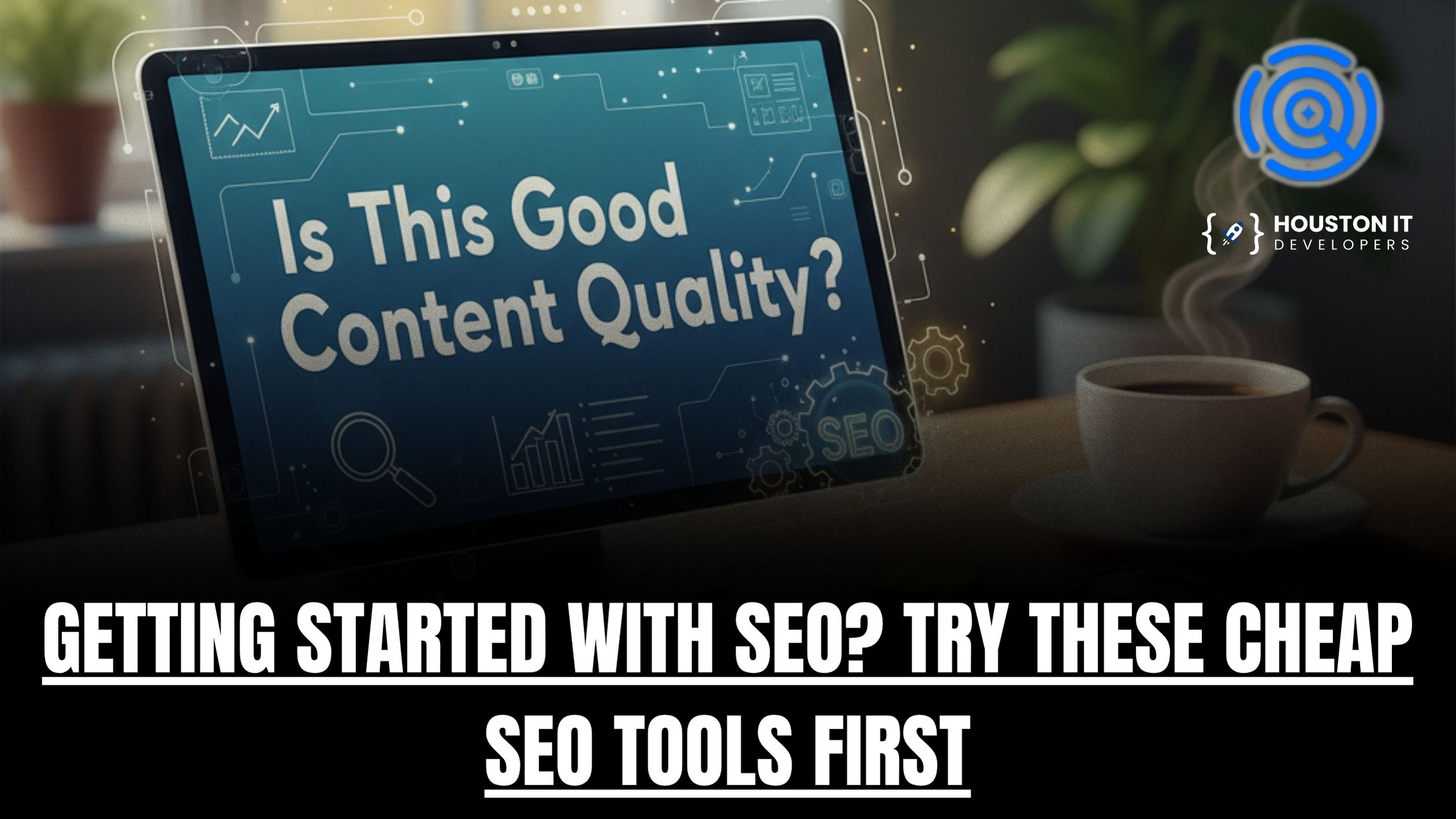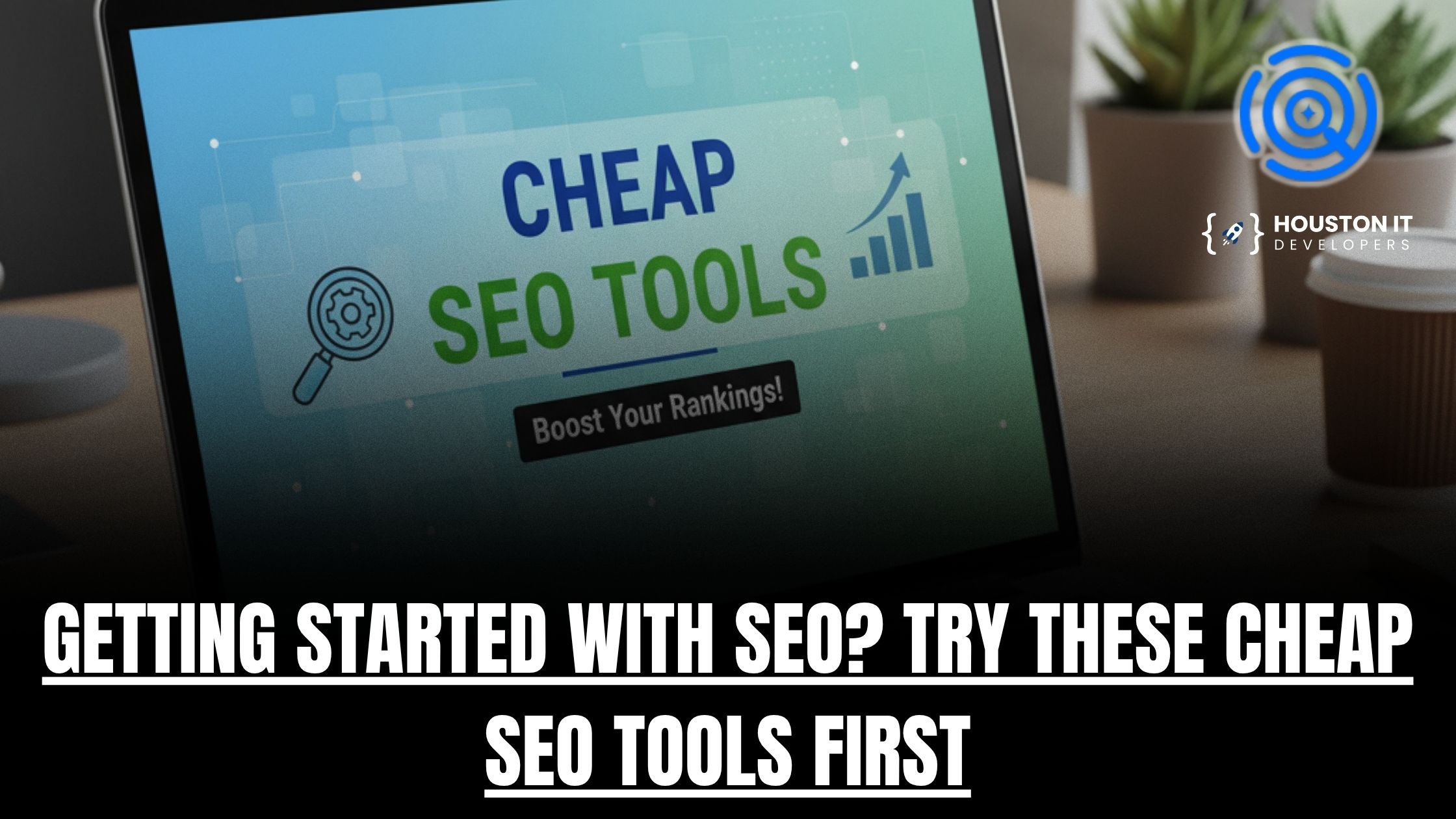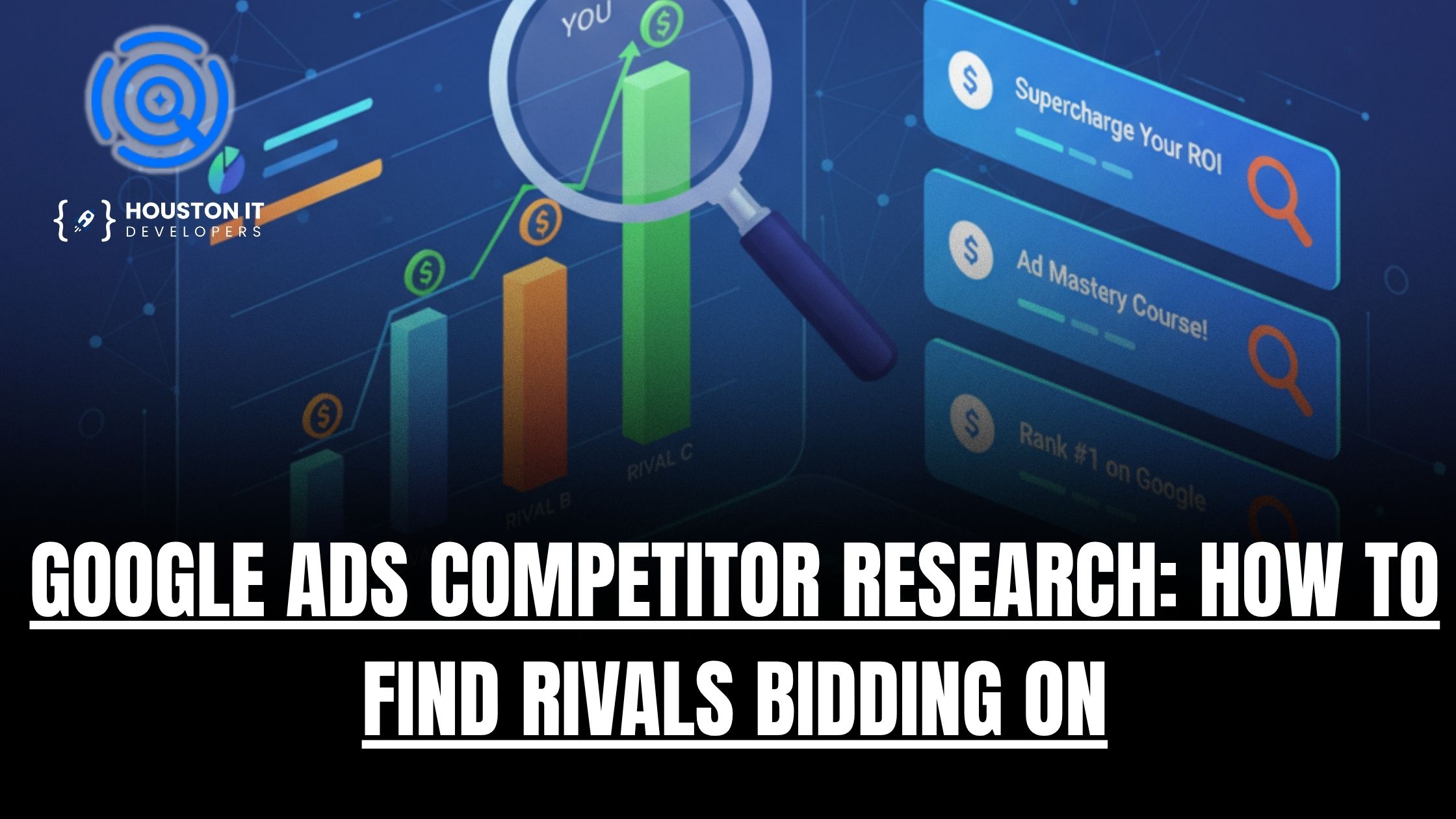What’s the point of driving traffic to your online store if visitors leave without making a purchase? On-page SEO optimization isn’t just about ranking higher—it’s about turning those clicks into conversions. In fact, 50% of marketers say SEO delivers the best ROI, and nearly 46% credit SEO for content marketing success.
The challenge? Many e-commerce sites overlook critical on-page SEO e-commerce factors like product descriptions, multimedia optimization, and internal linking—leading to lost sales opportunities.
In this blog post, we’ll cover the best on-page SEO practices for e-commerce, including how to optimize product descriptions for e-commerce SEO, enhance site structure, and improve e-commerce click-through rates to maximize conversions with on-page SEO optimization.
Why SEO Is Necessary for E-Commerce
With over 26 million e-commerce sites worldwide and new stores launching daily, e-commerce SEO is the key to standing out in an oversaturated market. Unlike traditional SEO, which broadly covers blogs and service pages, on-page SEO optimization for e-commerce product pages focuses on high-intent searches—where users are ready to buy. If your store isn’t optimized properly, you’re not just losing traffic—you’re handing conversions to your competitors.
Many online retailers focus on paid ads for visibility, but this is a short-term strategy with rising costs. SEO delivers sustained traffic and conversions by optimizing the structure, speed, and content of your website.
Here’s why on-page SEO optimization is an indispensable investment for e-commerce brands:
Dominating Search Rankings
Google prioritizes e-commerce sites that offer relevant, structured, and keyword-optimized content. A well-executed on-page SEO checklist for e-commerce ensures that product pages rank not just for branded terms but for high-commercial intent keywords like “buy [product] online” or “[product] free shipping.” Without this, you’ll remain buried beneath competitors who are actively optimizing.
Advanced UX Signals That Impact SEO
Google’s RankBrain algorithm evaluates bounce rates, dwell time, and interaction rates to determine ranking positions. If your site has slow load times, poor navigation, or thin content, your rankings—and sales—will suffer. On-page SEO e-commerce strategies must focus on the following:
- Reducing bounce rates by improving page load speed and ensuring intuitive site navigation.
- Enhancing dwell time with engaging product descriptions, detailed specs, and video content.
- Optimizing for mobile—since 79% of smartphone users have purchased online via mobile.
E-Commerce Conversion Optimization That Cuts Acquisition Costs
SEO is not just about ranking—it’s about revenue. Retailers who focus on how to optimize an e-commerce site for conversions benefit from:
- Better organic click-through rates (CTR) by crafting compelling meta titles and descriptions that drive action.
- Optimized product descriptions for e-commerce SEO that integrate semantic search terms and persuasive copywriting.
- Strategic internal linking that directs users toward high-value products, bundles, and related items, increasing AOV (Average Order Value).
Building a Long-Term Growth Machine
Unlike paid ads, which stop delivering the moment your budget runs out, SEO compounds over time. By consistently implementing the best on-page SEO practices for e-commerce, your store will benefit from sustained, organic traffic growth and higher conversion rates—without relying on skyrocketing ad costs.
Ignoring on-page SEO optimization means leaving revenue on the table. The brands that invest in e-commerce SEO tips for higher conversion rates now will dominate search results, improve profitability, and future-proof their business.
How to Turn Clicks Into Conversions
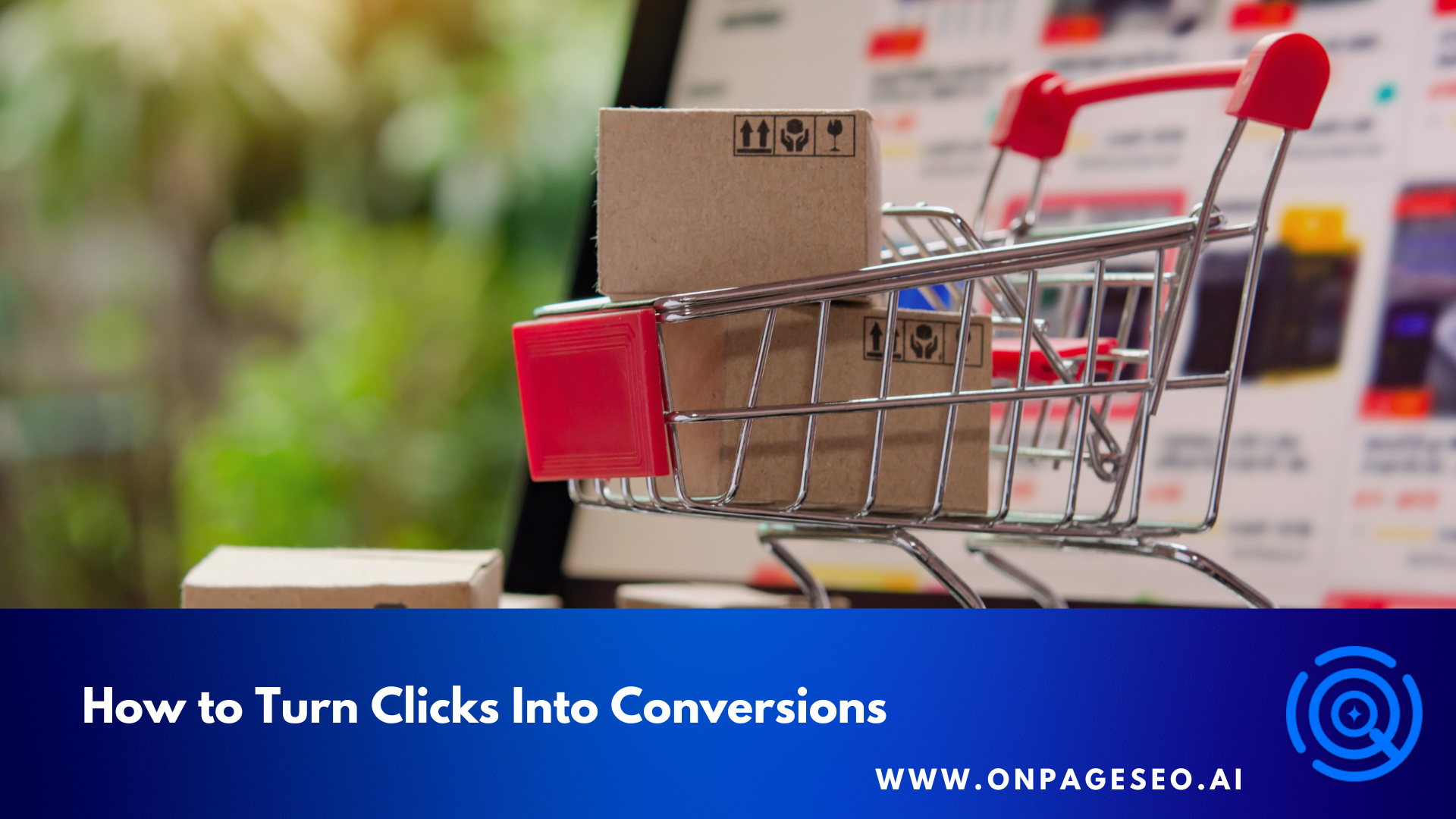
Driving traffic to your e-commerce site is just the first step—the real challenge is turning visitors into buyers. Many online stores struggle with high bounce rates and low conversion rates because their product pages aren’t optimized for user intent. Factors like slow-loading pages, unclear product descriptions, and poor internal linking can discourage potential customers from completing their purchase. E-commerce conversion optimization ensures that every element of your site is designed to guide visitors toward checkout seamlessly.
Here’s how to refine your on-page SEO optimization for e-commerce to turn more clicks into sales.
Craft High-Converting Product Descriptions
Many e-commerce stores make the mistake of treating product descriptions as an afterthought, but in reality, they are one of the most critical elements of on-page SEO optimization. A well-crafted product description not only helps your page rank higher but also plays a direct role in e-commerce conversion optimization by addressing search intent and persuading buyers.
To optimize product descriptions for e-commerce SEO, follow these expert strategies:
- Target high-intent keywords strategically – Instead of stuffing keywords, use them where they naturally enhance readability. For example, instead of just saying “high-quality laptop stand,” optimize with “best on-page SEO practices for e-commerce product pages”, reinforcing both SEO and user engagement.
- Use psychological triggers to increase conversions – Phrases like “limited stock,” “fast shipping,” and “money-back guarantee” create urgency and trust, pushing hesitant buyers toward a purchase.
- Make descriptions skimmable yet persuasive – Bullet points improve e-commerce click-through rates by allowing users to quickly scan key benefits while detailed paragraphs explain why the product is the best choice.
- Avoid duplicate content at all costs – Many retailers copy manufacturer descriptions, but Google penalizes duplicate content. Custom, SEO-optimized descriptions will outperform competitors while improving user engagement.
By applying these best on-page SEO practices for e-commerce, you ensure your product descriptions not only rank well but also convert browsers into buyers.
Optimize Images & Multimedia
In e-commerce, visuals are just as important as text. Search engines analyze images and videos to understand page relevance, while customers rely on high-quality media to make purchasing decisions. On-page SEO optimization for e-commerce product pages isn’t complete without properly optimized images and videos. Poor media optimization leads to slow page speeds, lower rankings, and missed sales opportunities.
To enhance on-page SEO e-commerce performance, follow these expert strategies:
- Use descriptive file names and alt text – Search engines can’t “see” images, so providing context is critical. Instead of “image123.jpg”, use “red-leather-wallet.jpg” and an alt tag like “Handcrafted red leather wallet with RFID protection” to improve e-commerce SEO and accessibility.
- Compress images without sacrificing quality – Large file sizes slow down your site, hurting both rankings and user experience. Use compression tools like TinyPNG, JPEG-Optimizer, or WebP format to maintain image clarity while reducing load time. Faster pages mean higher conversion rates.
- Implement structured data for product images – Schema markup allows search engines to display rich snippets, such as product images in search results, increasing click-through rates and organic visibility.
- Leverage product demo and explainer videos – Video content increases trust, keeps visitors engaged longer, and improves conversions. Use professional, high-resolution videos that showcase key features, benefits, and use cases.
- Enable lazy loading – This ensures that images and videos load only when they come into view, improving site speed without compromising user experience.
Implementing these best on-page SEO practices for e-commerce enhances search rankings, improves user engagement, and drives more conversions. For additional SEO insights, explore How to Fix Two Titles in Yoast and Optimize Your SEO.
Strengthen Internal Linking
Internal linking is one of the most overlooked yet powerful e-commerce SEO strategies for improving both search visibility and user experience. When used strategically, internal links create a seamless browsing journey, guiding potential customers to relevant products and increasing the likelihood of conversion. More importantly, internal linking helps distribute link equity, ensuring that important pages—such as high-margin product listings—receive stronger ranking signals.
To maximize on-page SEO optimization for e-commerce product pages, follow these key strategies:
- Link to related products – Suggest complementary or frequently bought-together items to encourage upselling and cross-selling. For example, a product page for running shoes can link to moisture-wicking socks or insoles.
- Use contextual links in product descriptions – Instead of generic “Click here” links, use descriptive anchor text like “Check out our best-selling wireless earbuds” to boost both SEO and click-through rates.
- Enhance category and subcategory linking – A well-structured site architecture improves navigation, ensuring customers find products faster while helping search engines crawl and index pages efficiently.
- Implement breadcrumb navigation – This enhances UX and provides clear site hierarchy, making it easier for users to backtrack while reinforcing keyword relevance for search engines.
A strong internal linking strategy not only improves SEO performance but also optimizes user engagement, ultimately driving higher conversion rates and increasing average order value.
Boost E-Commerce SEO with AI-Powered Optimization Tools

Optimizing an e-commerce site requires precision, from crafting compelling product descriptions to structuring internal links effectively. The OnPageSEO.ai Chrome extension simplifies on-page SEO optimization for e-commerce product pages by providing real-time, AI-driven insights that improve search rankings and conversions.
The OnPageSEO.ai Chrome extension offers both free and pro features to help e-commerce businesses fine-tune their SEO strategy with instant analysis and actionable recommendations:
- Instant On-Page SEO Audit – Get a one-click health score assessment with AI-powered recommendations to improve on-page SEO e-commerce strategies.
- Title & Meta Description Optimization – Analyze, generate, and refine SEO-friendly product titles and meta descriptions using AI.
- Header Structure Audit – Evaluate H1-H6 structure, ensuring your pages follow best on-page SEO practices for e-commerce.
- Internal & External Link Analysis – Identify broken links, anchor text issues, and optimization opportunities to enhance navigation and link equity.
- Image SEO Audit – Optimize alt text, file names, and WebP conversions for faster load times and improved rankings.
- Keyword Analysis – Track keyword density, distribution, and on-page keyword usage for better relevance and ranking potential.
With OnPageSEO.ai, e-commerce businesses can streamline optimization, fix SEO errors instantly, and improve e-commerce conversion optimization—all from a simple Chrome extension.
Final Thoughts on On-Page SEO Optimization for E-Commerce
On-page SEO isn’t just about rankings—it’s about conversions. By optimizing product descriptions, improving internal linking, and enhancing multimedia, you create a seamless shopping experience that drives sales. Strong on-page SEO ensures your store remains competitive, attracts high-intent buyers, and builds long-term revenue without relying on costly ads.
Ready to optimize your e-commerce site effortlessly? The OnPageSEO.ai Chrome extension simplifies SEO with AI-powered insights, real-time audits, and instant fixes—helping you rank higher and convert more visitors into customers. Try OnPageSEO.ai today and take your e-commerce SEO to the next level!
